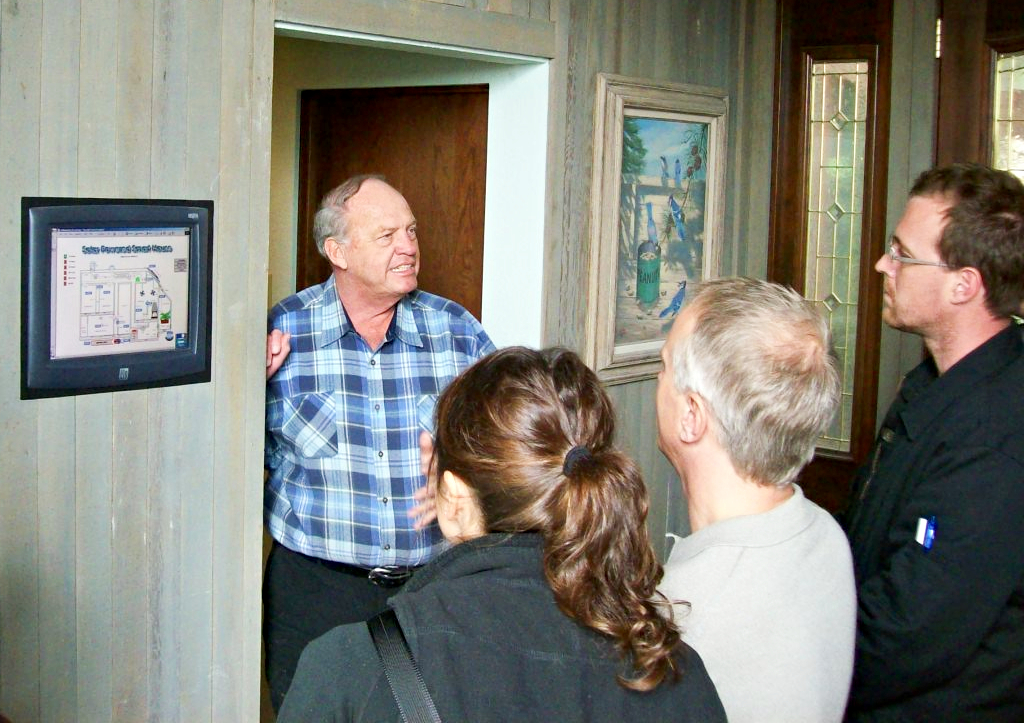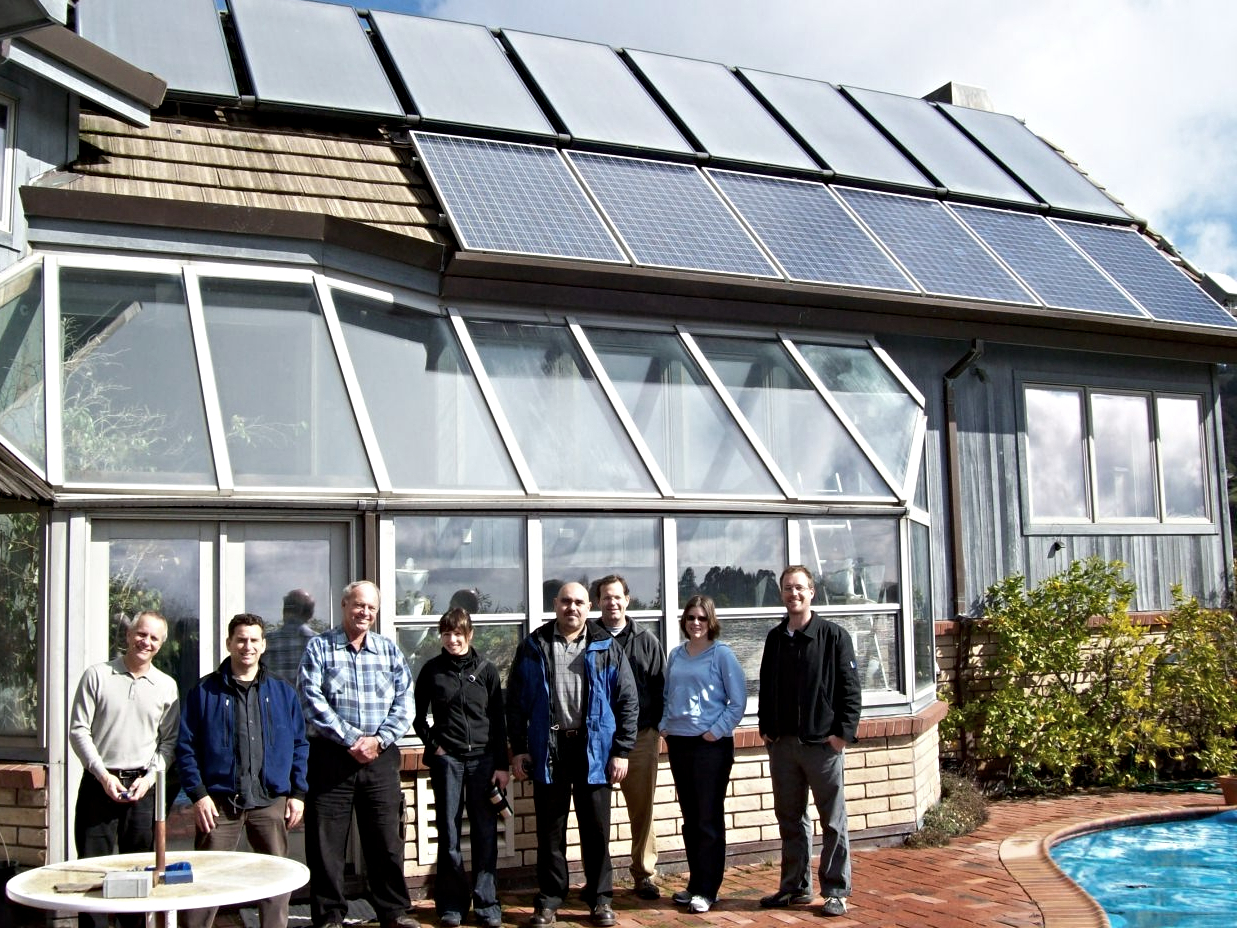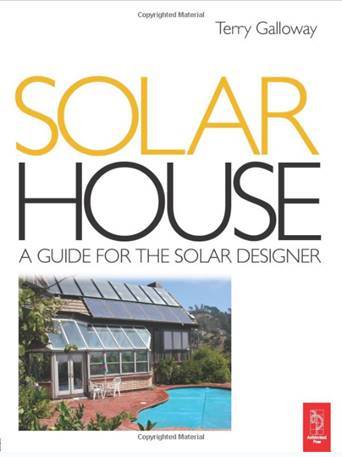
By Gary Gerber
Last Thursday night I went up to the Chabot Space & Science Center in the Oakland hills to attend a memorial for Dr. Terry Galloway, avid amateur astronomer, inventor, survivor of the firestorm and client of Sun Light & Power, who walked into our offices in late 1991 and engaged SLP to rebuild his home as a state-of-the-art solar home. And so began a multi-year adventure, exploring just about every possible idea we could come up with together, including passive design, non-toxic materials, computer home controls, super-insulation, heat recovery ventilation, a ground source heat pump, Heat Mirror energy efficient windows, a passive solar greenhouse and of course, solar water heating and space heating. And more.
Back then SLP had an in-house architect and a stable of builders, along with our solar thermal team. But this was quite an ambitious project for us, involving unique new challenges we had never taken on, like clearing the ruins of a burned-down home, establishing and maintaining erosion control, excavating into a steep hillside site, putting in a substantial new pier and grade beam foundation and massive retaining walls, and working with SIPs (structural insulated panels), to name a few.

After completing this home, Terry decided to write a book about it. The book was published in 2004 and was called "Solar House – A Guide for the Solar Designer". Terry asked me to write the Foreword for the book, and I was thinking that rather than go into more details about this project and about Terry, why not just reprint that Foreword here? Here it is:
Foreword to Solar House – A Guide for the Solar Designer, by Dr. Terry Galloway 2004
Octobers in the San Francisco Bay Area are always warm; and in late October, for at least a few days, the winds usually reverse direction and blow westerly, bringing even warmer air to the coastal areas from California's famous Central Velley. There is even a name for these winds: the Santa Anas. People around here inexplicably call this "earthquake weather," but it really is fire weather. The morning of 21 October, 1991, I remember noticing the balmy breeze coming from the "wrong" direction as I left my home in the Oakland hills and drove to work. Little did I know that the East Bay landscape, along with thousands of people's lives, was about to undergo a sudden and dramatic change.
I didn't know Terry Galloway at that time. But within two days I knew the name of the street he lived on – Charing Cross. Most of the fatalities from what became known as the Oakland Firestorm occurred within one block of Terry's house, on the 14' wide, winding, steep stretch of pavement that the City of Oakland had refused to widen and which had vexed Terry and his neighbors for years. But that's another story...
It may be that if there had not been an Oakland Hills Firestorm, Terry Galloway would never have walked into my office. But I like to think that the life path we had each staked out for ourselves made our meeting inevitable. Terry had dedicated his professional life years earlier to renewable energy research and development, and had been a pioneer in promoting hydrogen fuel cells, calling for the use of medical or feedlot waste rather than petroleum to create the hydrogen. Terry had also extensively researched solar energy systems and was a strong advocate. As for me, since graduating in Mechanical Engineering from UC Berkeley in 1974, I had dedicated my life to promoting solar energy as the primary long-term energy source for the planet. So when Terry showed up at Sun Light & Power a month after the fire, I immediately knew that I had met a kindred spirit. Terry asked me to help him design and build a complete solar home, with both passive and active solar design elements. From day one Terry knew what he wanted to do with his home, and he never wavered from his vision: he wanted his home to be a 'living laboratory." He wanted to be able to live inside his own grand experiment in solar living. So great was his dedication that he actually lived for his first full year in the house without ever activating the back-up heating systems – because he wanted to establish a baseline performance for the passive solar systems!
Terry has always sought the latest cutting-edge technologies. We discussed the pros and cons of dozens of system options, looking at radiant floor heating (not at all common in this area at the time), solar thermal water heating, pool heating and space heating, photovoltaic electricity generation (also not at all common at the time), and a ground-source heat pump as back-up (not even heard of around the Bay Area at the time). The hills of Oakland can get quite warm in the summer, but Terry wanted to avoid air conditioning if possible, so we crafted a night-cooling system to distribute the cool air to all the rooms during the day. Terry knew this was going to be a well-insulated, tight home, so we researched heat recovery ventilation systems to bring fresh air into the house without losing valuable heat. To be sure that the house was built tight, we investigated the new "SIPs" (Structural Insulated Panels), a kind of stress-skin building element using a 10" thick core of polystyrene, clad with OSB board. Terry wanted his house to be "smart," with a touch-screen computer-controlled interface that could run all of the systems and provide monitoring and data acquisition – and of course no such technology existed at the time, so we would have to invent it ourselves. We implemented all these systems, and more. And it gives me pride to know that most of these "new" concepts that we tried have now moved into the mainstream in the 11 years since we started this house.
The best part was that Terry, like me, had no fear of the unknown. As pioneers and inventors, we both had great confidence in our engineering abilities. If we could conceive of it and "prove" it to ourselves, we were willing to try it. Of course, in this case this was a lot easier for me than for Terry. After all, he was the one with the open checkbook. It became a challenge for me to keep my mouth shut when I heard of, or thought of, a promising new idea, because all I had to do was mention it and Terry would say "Great, let's look into that!" and I'd be off on another research project, and by the way never mind that we were in the middle of the house construction!

Throughout the project, with an ever increasing budget, with a winter start causing us rain delays, with the City of Oakland requiring us to provide ever increasing (and unbudgeted) erosion control measures, with our structural engineer designing a $120,000 foundation system for a 2200 square foot home, with the daunting task of crafting all of the computer controls and interface for the home's multiple systems that Terry took on personally, with all that and much more, Terry was ever cheerful, ever optimistic, ever understanding, ever willing to tackle the next problem with intelligence and aplomb. Terry is a man with the rare and remarkable combinations of vision with practicality, risk-taking with meticulousness, thoughtfulness with impulsiveness – and most importantly, a kind and caring human being. He has crafted this book with as much care and thoughtfulness as he showed throughout the project. The book that he has written is rich in details and science, yet it always maintains and easy, personable nature – just like Terry. I, for one look forward to the years ahead hearing more about this ongoing experiment, as Terry continues to push the green edge of sustainable design.
Gary Gerber, P.E.
Berkeley, California
---
Terry's book is still available on Amazon, if you want to geek out and get a copy: https://www.amazon.com/Solar-House-Guide-Designer/dp/0750658312
Goodbye, friend.
Gary Gerber has been the Founder and President of Sun Light & Power since the company's inception in 1976.